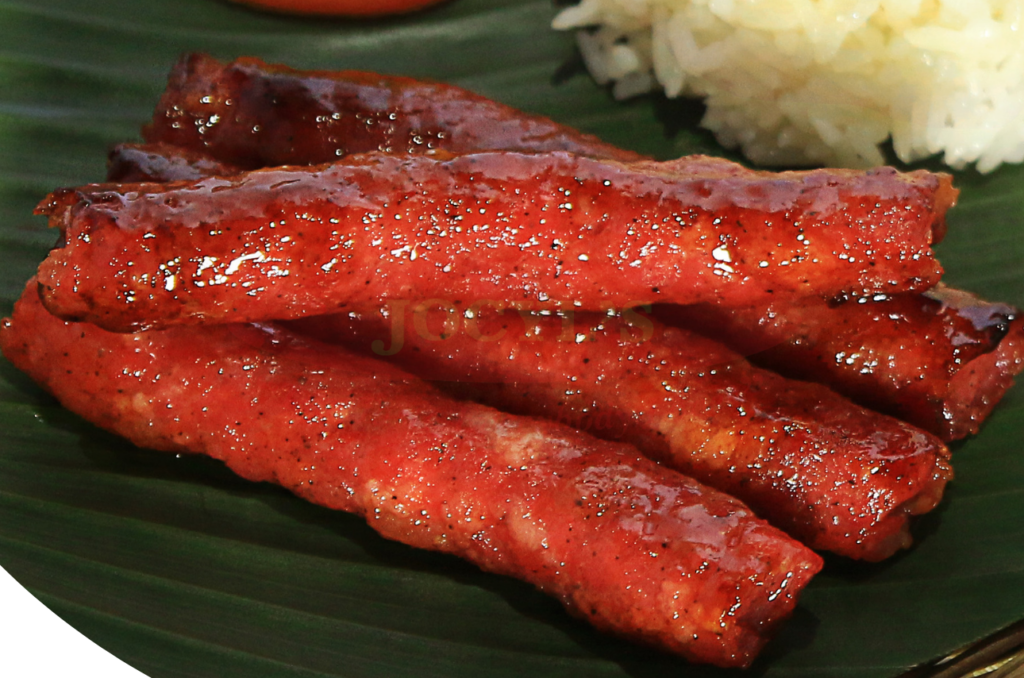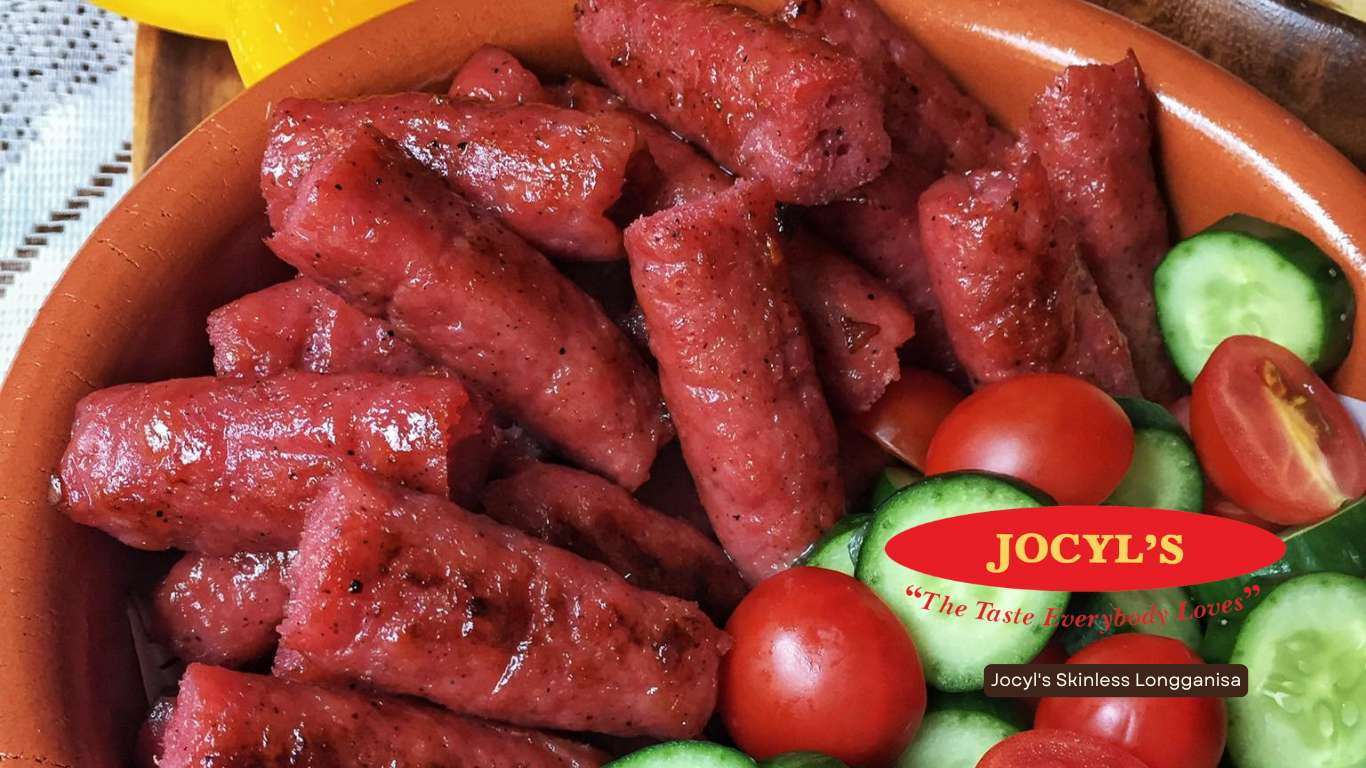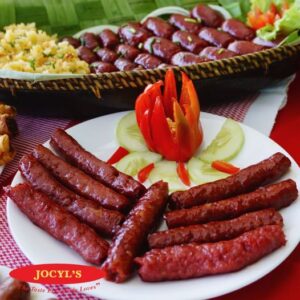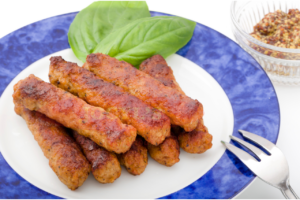
About Us
Jocyl's Food Products (a.k.a "Chorizo de Kalibo") is a bold and forward-thinking company whose goals are set to create surprising ways of developing and promoting our products. We are entrepreneurial and visionary in producing and marketing the best chorizo and other food products from our hometown - Kalibo, Aklan, Philippines.
About UsContact Info
- Tigayon Highway, Barangay Tigayon, Kalibo, Aklan
- +63362628688
- jocylsfoods@gmail.com
- Tigayon Highway, Barangay Tigayon, Kalibo, Aklan
- jocylsfoods@gmail.com
- +63362628688

How to Cook Longganisa Without Oil: Easy, Healthy & Delicious Guide
-
Jocyl's Food Products > Blog > Food > How to Cook Longganisa Without Oil: Easy, Healthy & Delicious Guide
Introduction to Oil-Free Longganisa Cooking
Longganisa is one of the Philippines’ most beloved comfort foods, often enjoyed as part of the famous “longsilog” breakfast—longganisa, sinangag (garlic fried rice), and itlog (fried egg). Traditionally, this sausage is cooked with a generous amount of oil, making it rich but often greasy. But did you know that you can actually cook longganisa without oil while still keeping its delicious flavor?
In this guide, we’ll walk through several oil-free cooking methods, share expert tips to achieve crispy and juicy results, and explore healthier alternatives to traditional longganisa. Whether you’re watching your diet, want to reduce fat intake, or simply prefer a lighter version, this step-by-step guide will help you enjoy longganisa guilt-free.
What is Longganisa?
History and Origins of Longganisa
Longganisa traces its roots to the Spanish chorizo, but over centuries, Filipinos have created countless regional versions. Each province adds its own twist—some sweet, some garlicky, and others spicy. It has become a staple in Filipino households and street-side eateries.
Different Varieties of Longganisa
Sweet (Hamonado) – Made with sugar, giving it a caramelized glaze when cooked.
Garlic (De Recado) – Packed with garlic and savory spices.
Skinless – Wrapped without casing, easier to prepare at home.
Vegan – Made from plant-based ingredients like tofu, soy, or mushrooms.
Why Cook Longganisa Without Oil?
Health Benefits of Oil-Free Cooking
Cooking without added oil reduces unnecessary fat and calories. Since longganisa is already rich in pork fat, it naturally releases oil as it cooks, so extra oil isn’t needed.
Flavor and Texture Differences
Surprisingly, oil-free longganisa still turns out juicy. In fact, the natural oils render slowly, giving it a flavorful and slightly smoky taste.
Cost and Practicality
Skipping oil saves money and reduces kitchen cleanup. No more greasy splatters on your stovetop!
Preparation Before Cooking Longganisa
Choosing the Right Longganisa
Fresh longganisa gives the best results. Frozen works too, but make sure it’s properly thawed before cooking.
Proper Thawing and Storage Tips
Thaw in the refrigerator overnight.
Avoid thawing at room temperature to prevent bacterial growth.
Essential Kitchen Tools Needed
Non-stick pan or cast-iron skillet
Tongs or spatula
Small pot (for boiling method)
Optional: air fryer or oven
Step-by-Step Guide: How to Cook Longganisa Without Oil
The Traditional “Boil and Simmer” Method
Place longganisa in a pan and add ½ cup water.
Cover and let it simmer over medium heat.
As water evaporates, the sausage releases its natural oils.
Continue cooking until longganisa caramelizes and turns golden brown.
Pan-Frying with Water (No Oil Needed)
Instead of oil, just use a splash of water. This prevents sticking while allowing the fat to render naturally.
Air Fryer Method for Oil-Free Longganisa
Preheat air fryer to 180°C (356°F).
Place longganisa inside without oil.
Cook for 12–15 minutes, shaking halfway.
Results: crispy on the outside, juicy inside.
Oven-Baked Longganisa Without Oil
Preheat oven to 190°C (375°F).
Line a baking sheet with foil or parchment.
Arrange sausages and bake for 20–25 minutes, flipping halfway.
Tips to Achieve Perfectly Cooked Longganisa Without Oil
Preventing Sticking in the Pan
Use a good non-stick or ceramic pan. If using stainless steel, add a splash of water at the start.
Enhancing Flavor with Spices and Herbs
Add bay leaves, garlic cloves, or even a touch of vinegar during simmering for an aromatic twist.
Getting Crispy Edges Without Oil
Allow longganisa to cook undisturbed in the pan for a few minutes to develop caramelized, crispy edges.
Common Mistakes to Avoid
Overcooking and Burning
Since there’s no added oil, sausages can burn quickly once the water evaporates. Monitor closely.
Not Removing Excess Water
If you don’t let the water dry out, longganisa turns soggy instead of crispy.
Using the Wrong Type of Pan
Thin pans make longganisa stick or burn. Always use heavy-bottom pans for even cooking.
Serving Suggestions for Oil-Free Longganisa
Traditional Filipino Breakfast (Longsilog)
Pair longganisa with garlic rice and fried eggs for the classic Filipino combo.
Pairing with Garlic Rice and Eggs
Even without oil, longganisa pairs beautifully with garlicky rice.
Creative Serving Ideas
Longganisa wraps with lettuce and cheese
Mixed into fried rice
Topped over salads for a protein boost
Healthier Alternatives to Traditional Longganisa
Skinless Chicken Longganisa
Made with lean chicken, offering less fat but the same savory kick.
Vegan or Plant-Based Longganisa
Soy-based or mushroom-based sausages give the same flavor without meat or fat.
Storage and Reheating Tips
Refrigerating Leftovers Safely
Store cooked longganisa in an airtight container for up to 3 days.
Best Reheating Methods Without Oil
Reheat in a non-stick pan with a splash of water.
Air fry for a quick crisp-up.
Frequently Asked Questions (FAQs)
1. Can I cook longganisa without thawing?
It’s better to thaw first. Cooking from frozen may cause uneven cooking.
2. Why does longganisa release oil even without adding any?
Because it’s made with pork fat, which naturally renders during cooking.
3. How do I make longganisa less greasy?
Drain excess oil after cooking or pat dry with a paper towel.
4. Can I make homemade longganisa healthier?
Yes! Use lean meats or try vegan recipes.
5. What’s the best way to get crispy longganisa without oil?
Let it cook undisturbed once the water evaporates, or use an air fryer.
6. Is oil-free cooking suitable for all longganisa types?
Yes, whether sweet, garlicky, or skinless, they cook well without oil.
Conclusion: Enjoying Longganisa the Healthy Way
Cooking longganisa without oil is not only possible—it’s healthier and just as delicious. With simple methods like simmering, air frying, or baking, you can achieve crispy, juicy results without the extra grease. Whether you’re pairing it with garlic rice or trying modern serving ideas, oil-free longganisa proves that you don’t need excess fat to enjoy authentic Filipino flavors.
👉 Want to explore healthier Filipino cooking? Check out Panlasang Pinoy’s healthy recipes for more inspiration!
Featured Product: Jocyl’s Skinless Longganisa

If you’re looking for a ready-to-cook, flavorful, and high-quality longganisa that works perfectly for oil-free cooking, try Jocyl’s Skinless Longganisa.
Made with premium pork and a perfect blend of spices, this skinless variety is easy to prepare, healthier, and ideal for quick Filipino meals. Simply simmer, let the natural juices release, and enjoy a delicious longganisa meal without adding oil.
Jocyl’s Social Media:
https://www.facebook.com/jocylsfoods
https://www.instagram.com/jocylsfoods
https://www.twitter.com/jocylsfoods
https://www.pinterest.ph/jocylsfoods
https://www.tiktok.com/@jocylsfoodsproducts
Recent Posts
- The Ultimate Guide to Authentic Filipino Breakfast: Why Chorizo de Kalibo Is Taking 2026 to the next level!
- Ultimate Aklan Pasalubong Guide: Authentic Filipino Treasures
- How to Cook Longganisa Without Oil: Easy, Healthy & Delicious Guide
- Ultimate Guide: How to Cook Ilonggo Longganisa – Perfect Every Time!
- What is Ilonggo Food? Discover the Rich Flavors of Western Visayas Cuisine
Recent Comments
Archives
- October 2025
- September 2025
- August 2025
- July 2025
- May 2025
- April 2025
- March 2025
- February 2025
- January 2025
- November 2024
- October 2024
- September 2024
- August 2024
- June 2024
- March 2024
- February 2024
- January 2024
- December 2023
- November 2023
- October 2023
- August 2023
- July 2023
- June 2023
- May 2023
- April 2023
- March 2023
- February 2023
Tags
- Aklan
- Aklan Pasalubong
- Boracay
- Boracay Food
- Boracay Island
- Boracay Pasalubong
- boracay snacks
- Boracay Souvenirs
- Breakfast
- Chicken
- chicken tocino
- Chori Burger
- chorizo
- ChorizoDeKalibo
- chorizo recipe
- Delicacies
- embutido
- embutido recipe
- Filipino Chorizo
- Filipino Cuisine
- filipino food
- Filipino Longganisa
- Filipino Sausage
- foodie guide
- homemade
- Iloilo
- Iloilo Chorizo
- Iloilo Food
- Iloilo Longganisa
- Iloilo Pasalubong
- ingredients
- JocylsFoods
- longaniza
- longganisa
- longganisa recipe
- meat
- Pasalubong
- pinoy recipes
- pork tocino
- recipe
- Recipes
- skinless longganisa
- snacks
- tocino
- tocino recipe








